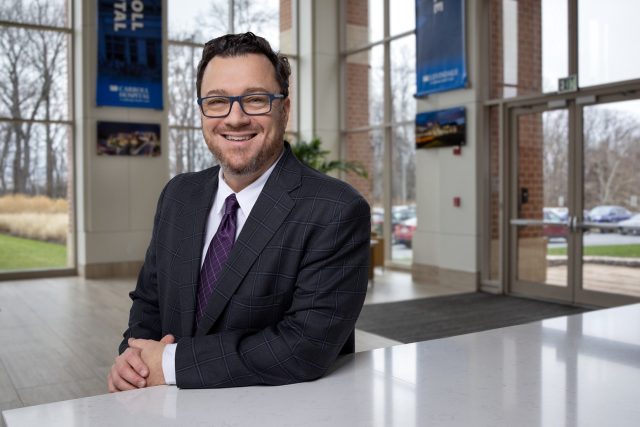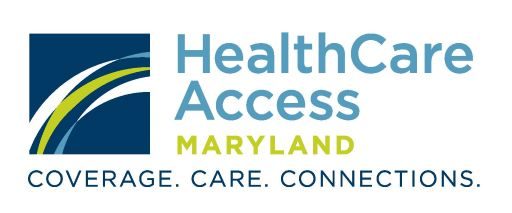
In HealthCare Access Maryland’s ongoing pursuit of community well-being, the significance of urgent care facilities cannot be overstated as it’s the first point of entry for many patients in need of immediate care. Dr. Thierman, President and chief executive of ExpressCare Urgent Care Centers and Children’s Urgent Care Centers, a LifeBridge Health Partner, epitomizes this dedication, seamlessly blending healthcare accessibility with technological innovation through the urgent care centers.
Dr. Thierman assumed the role of President and chief executive of ExpressCare and Children’s Urgent Care centers in January of this year. His background includes 13 years of clinical practice and leadership roles in the Emergency Department. He served as Chief Medical Information Officer (CMIO) for LifeBridge Health System and helped to establish the LifeBridge Health Virtual Hospital with affiliated clinical call centers in Jerusalem and the Philippines to provide telemedicine services across the continuum. He has a PhD from MIT and training in Emergency Medicine from Harvard Medical School and Johns Hopkins Hospital.
In a dialogue with Dr. Thierman, we unravel the essence of urgent care and its symbiotic relationship with our broader healthcare ecosystem.
What is the role of Urgent Care in our healthcare system?
Urgent care plays a vital role in our health system because it is often the first, most convenient point of contact and entry for our patients into the greater LifeBridge Health system. We offer care and treatment for most of the minor illnesses and injuries our patients experience. When patients require additional care we are able to refer them to the appropriate specialist at LifeBridge Health.
How do Urgent Care facilities differ from Emergency Rooms?
Urgent care is for acute but more minor health concerns while the Emergency Department is intended for more serious, life-threatening conditions. For example, simple injuries involving sprains or closed fractures, minor burns, rashes, or lacerations that may require simple suturing to close, illnesses and infections such as cough, fever, urinary tract infections, STDs, pink eye, ear infection, or sore throat are all well-served at our urgent care centers. More serious conditions such as open fractures, head trauma, stroke symptoms, loss of consciousness, chest pain, significant shortness of breath or severe abdominal pain are all best served at the emergency department.
The difference is really built into the design and staffing models of these two unique care settings and using each optimally, for its intended purpose, is the most efficient way to receive fast and high-quality care. I like to think of the emergency department as a hot-rod with a V-12 engine and urgent care as a hybrid commuter car. For the more usual and less intense daily trips, the V-12 is overkill and a waste of resources while the commuter car is perfect. But when you’re in need of fast and powerful action in an emergency, the V-12 is perfect, and the commuter car just wouldn’t cut it. Knowing when each is most appropriate can be tricky sometimes and we are trying to help educate the public so they can recognize when to choose each type of care setting.
What are some common misconceptions of Urgent Care?
That urgent care is expensive or just for people with private insurance. This is not true – we accept most forms of insurance, including Medicare and Medicaid programs. The total cost of an urgent care visit is significantly less than an emergency department visit with or without insurance. For most Medicare and Medicaid patients they have zero out of pocket cost at an urgent care.
Another misconception is that Urgent Care can’t take X-rays, do labs, or perform procedures. We have X-ray services, perform many minor repairs and procedures, have in-center treatments (like nebulizer treatments for asthmatics), and perform both in-house and send out testing for over 100 different conditions or infections.
Many assume urgent care staff and providers aren’t as knowledgeable as the emergency department or primary care providers, which is false. In fact, most of our providers and staff come from both the Emergency Department and primary care environments where they trained and then decided to work in urgent care. Unlike primary care, we offer extended services like labs, X-rays, and minor procedures like suturing. And unlike the emergency department, we can usually get our patients in and out with a diagnosis and treatment plan in under an hour.
How accessible are Urgent Care facilities?
We try to be as accessible as possible with over 30 locations throughout the state of Maryland. You can make a reservation for a time-slot online or you can just walk-in anytime. We make registration fast and efficient and you can do much of the registration process online before you even come in. We also have a very active telemedicine service which allows patients to be seen for urgent care issues in the comfort of their home or workplace using videoconferencing technology. This service is staffed by our same amazing providers who can diagnose and treat your condition, send a prescription to the pharmacy of your choice, and email you discharge instructions virtually.
In your role as the president and chief executive of Express Care, what are you hoping to achieve when it comes to addressing community health issues?
There are so many community health issues I hope to address. Most importantly, I hope to improve access to care, which we are actively doing at ExpressCare from offering telemedicine to our 30 convenient locations that are open 9 a.m. – 9 p.m. 7 days a week, and on holidays for patients to get care. I also recognize there are many patients that are choosing the emergency department because they don’t know we can care for them quickly and cost effectively at urgent care centers. Caring for more patients with low acuity needs in urgent care centers allows our emergency department teams to focus on the patients who need that level of care, not only at LifeBridge Health, but throughout the state of Maryland.
We also recognize the need for every patient to have a primary care provider and work to connect them with a LifeBridge Health primary care provider for follow ups and next steps in their care journey. We also are here to serve our communities through all the waves of infections and illnesses that they experience such as flu, RSV, and COVID. We were instrumental during the COVID pandemic in providing access to testing and treatment for our patients when many medical facilities were closed or overwhelmed. We were the first urgent care company in the state of Maryland to offer Paxlovid, for example, to treat COVID during the crisis through our collaboration with the Maryland Health Department. And we will continue to be here after hours, during weekends, in bad weather or good, to address our communities’ health needs.
Everyone in the community deserves prompt and efficient care when they need it, and that is what ExpressCare is here for.






